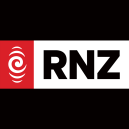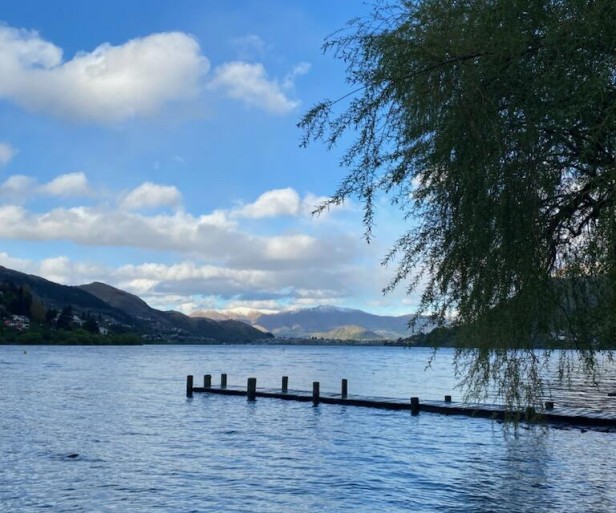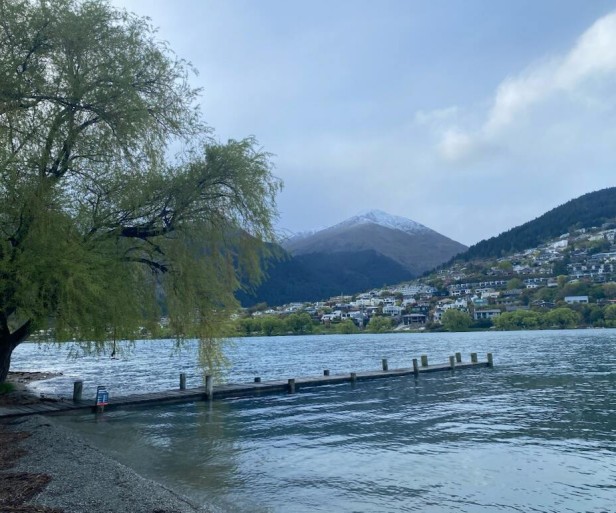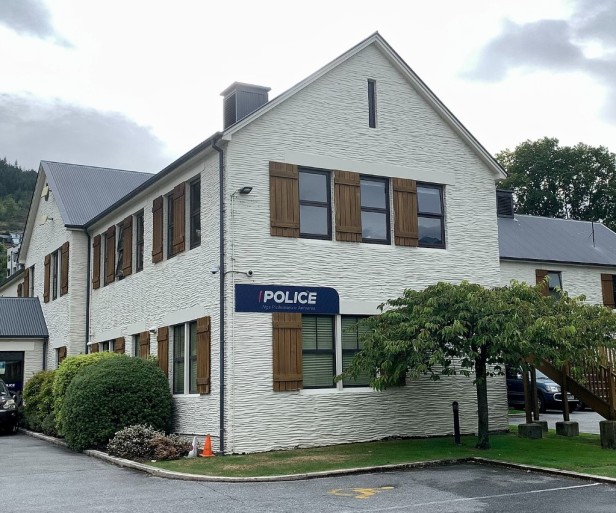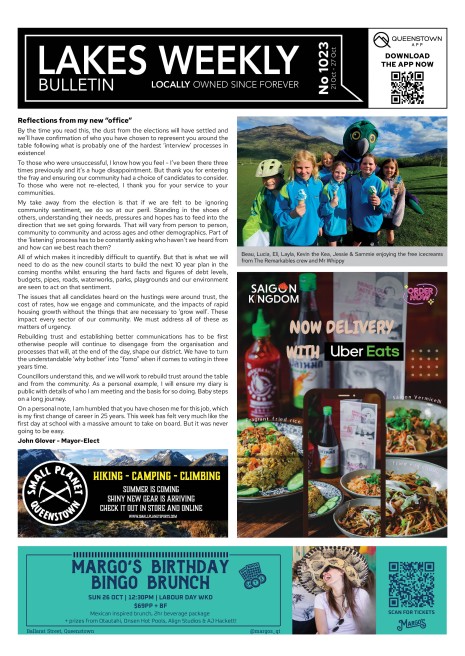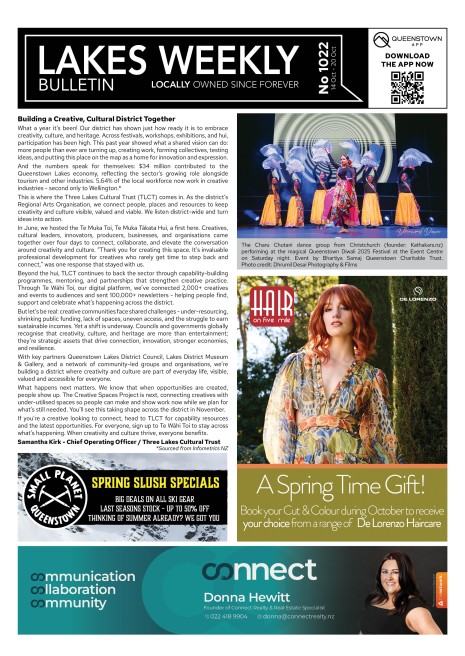How do Queenstown residents feel about increasing tourism and its impact?

Tess Brunton, Otago/Southland reporter
tess.brunton@rnz.co.nz
Queenstown has been suffering from growing pains for years but with visitor and resident numbers continuing to swell it's turning into a full-blown belly ache.
The Queenstown Lakes population is about 52,000 people, but that swells to about 120,000 people in peak summer.
It has added pressure to infrastructure, traffic congestion and caused local frustration when freedom campers used streets as toilets and rubbish pits.
As the government pushes for more tourist arrivals, residents have been speaking about the challenges facing their face and what's on the horizon.
Queenstown was a small community on the cusp of big development when iFly Queenstown owner Matt Wong arrived about 23 years ago.
"When I was here, Jacks Point was the only development on the southern corridor. Ladies Mile, Shotover Country, that area was green pasture. There were horses and sheep running around," he said.
"There was no sign of any development happening in that area at all and now looking at it today, there's an extra 10,000 houses out in those areas."
Earlier this year, Queenstown Lakes councillors were warned that urgent intervention was needed to prevent local hostility over increasing tourist pressures as part of a regional deal proposal that aimed to address the region's critical needs.
Among the challenges, it found the 11 kilometre trip between Lake Hayes and central Queenstown could regularly exceed an hour if nothing was done, due to traffic congestion.
- Checkpoint, 7 April 2025: Queenstown locals on pressures with visitor and resident growth
Wong, who is also a local councillor, said tourism had a part to play in the problem and the solution, but issues like traffic congestion and infrastructure pressures didn't go away during the quieter months.
"The analogy we always use with traffic, for example, is you're not stuck in traffic, you are the traffic," Wong said.
"And a lot of new residents coming to Queenstown don't realise that actually they are turning this small quaint town, 30, 40, 50 years ago into a maturing town that is becoming a small city."
The council and government needed to investigate different ways to help fund more infrastructure, including user pays or a visitor levy, he said.
"Growth doesn't pay for growth. We've had a lot more development obviously as a region than most other districts and that growth has not really paid for itself, it's enabled growth to happen," he said.
"But it hasn't actually contributed to the investment and the infrastructure that that growth brings."
One long term resident said the area had a lot of growing pains.
The district needed more affordable housing but it seemed like they were getting more second houses for overseas buyers, he said.
"We've got a problem and the problem is overtourism and overdevelopment. We aren't thinking about quality, we're only thinking about quantity."
Diane bought a home here in 2008 and visited every year, saying she loved Queenstown but it did have issues.
"You have to sort of plan your time to go out to the grocery stores and there's just huge problems with traffic and everything's always blocked up, they're always doing the next thing ... it's really a challenge and I think it's discouraging some people," she said.
But Queenstown resident Les didn't understand what people were fussing about.
"There's always been tourists in the town so people just need to harden up and accept it. It's like they probably moved here knowing that so why change it?"
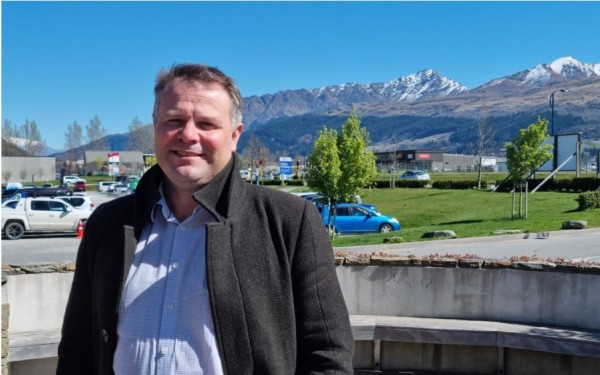
Queenstown Lakes mayor Glyn Lewers. Photo: RNZ / Niva Chittock
Tourists were still enjoying Queenstown, telling RNZ that it had been a welcoming, beautiful place to visit.
Oliver regularly stayed in the area regularly for work, and said traffic was getting worse.
"I sort of changed where I stay and now stay in Frankton as opposed to staying in Queenstown just because of the traffic and trying to get in and out can add in an extra 45 minutes potentially on my travel time," he said.
But he didn't think tourists should be blamed for infrastructure pressures, saying governments had consistently underinvested in the regions.
"For Queenstown, the tourists are really what really contribute to making this place special beyond just its natural beauty, it's the vibrancy that they bring into the area," he said.
Business owner Amber said Queenstown was quieter when she moved there 15 years ago, but she welcomed the visitors.
She was frustrated with the carparking, saying she has been forced to come in early or pay through the nose - $6 a half hour at one nearby carpark.
Amber said it was an expensive hassle for tourists and a real turn off for locals.
"What's the point of coming to town when they go out and get free parking out there (in Frankton). They can leisurely walk around, they have all the amenities that they need out there," she said.
"It's really disheartening and it's really sad to me because we can't survive just on tourists in this town. We have to have the locals coming in."
Ten years ago, Infometrics figures show the Queenstown Lakes population was about 33,400, and it has grown by about 19,000 people since then.
In the regional deal proposal, Queenstown Lakes population was projected to reach 100,558 by 2053.
Queenstown Lakes mayor Glyn Lewers said community frustrations with tourism were likely a hangover from underinvestment.
The council was investing $470 million to improve infrastructure including drinking water and wastewater just for the expected tourism growth, he said.
"But I'll acknowledge $470 million is not enough. That is just for us to get by and probably with a diminishing visitor experience. That's the best we can do without burdening the ratepayer even more," he said.
Before the government announced it wanted to welcome more tourists, Queenstown was already predicting about 7.1 percent annual growth in tourism for the next five years before flattening to 3 percent growth for the next five years, he said.
"Over the next 10 years, just under $1 billion worth of capital expenditure is to accommodate expected growth, not to create growth, just the expected growth. That's 40 percent of our capital expenditure."
Lewers said they couldn't stop people from moving or visiting Queenstown so they needed to focus on how to plan for more growth.
The council had improved its data so it knew what it was dealing with, looked at the best, most cost efficient places to grow through spatial planning, and submitted a regional deal he believed could help to alleviate some of the issues including transport, health and education.
He believed it was an immense opportunity but it needed to be consistent and invest in the long term, not just boom and bust investments.
"If we get this right, we can be one of the innovative, forward thinking, progressive little towns," he said.


